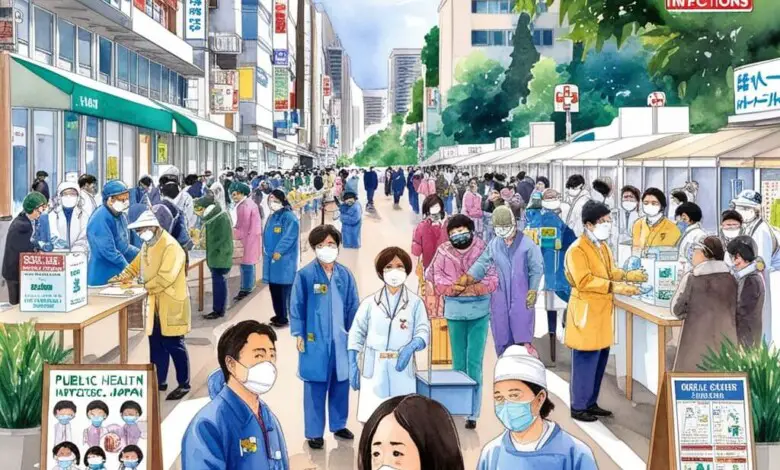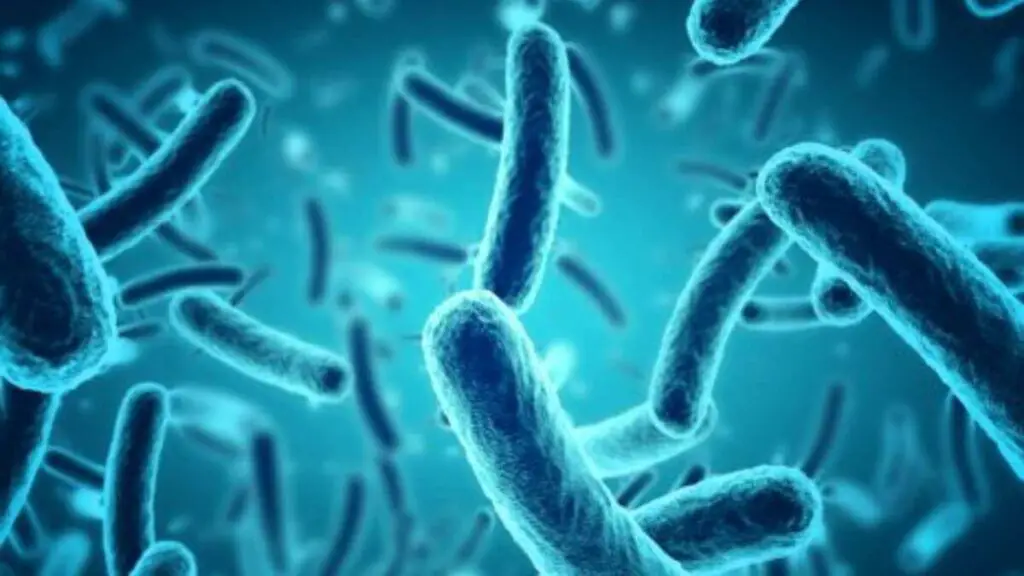Surge in Bacterial Infections in Japan: Unseen Threats Now Revealed

This year, bacterial infections in Japan are on the rise, with a surge in cases of a potentially deadly condition. Health officials are working hard to figure out why more people are getting sick. To help everyone stay safe, they want everyone to know the signs of this illness. In fact, in the first half of 2024, we saw 1,019 cases. That’s a lot more than all of last year. The disease causing this problem is called STSS. Because of this, it’s important we all stay alert.
In March, a health group in Japan called the National Institute of Infectious Diseases gave a warning. They noticed more people were getting sick. Sadly, 77 people died from this sickness. Most of these people were older than 50.
Let’s make this easier to understand. First, think about the United States. In the year 2021, there were 145 people who got the same illness. Now, you might wonder, where does this information come from? Well, it comes from a place known as the U.S. Centers for Disease Control and Prevention. Lastly, it’s important to know that this place keeps a record of all the illnesses in the United States. So, they’re a reliable source for this kind of information.

For further information, please visit Streptococcal Toxic Shock Syndrome by the CDC and the National Institute of Infectious Diseases.
What is Streptococcal Toxic Shock Syndrome (STSS)?
Streptococcal toxic shock syndrome, or STSS, is a very serious sickness. It happens when a type of bacteria called Group A Streptococcus gets into the blood and deep parts of the body. This is what the Centers for Disease Control and Prevention (CDC) tells us.
Group A Streptococcus, or GAS, is a common kind of bacteria. You can find it in the throat and on the skin. The CDC says that most of the time, GAS infections are not too serious, like strep throat. But sometimes, if the bacteria get into places they don’t usually go, like the blood or muscle, it can cause very dangerous conditions like STSS.

Céline Gounder is a disease expert who works for KFF Health News, NYU, and Bellevue Hospital. She tells us that GAS often causes sore throats and skin infections. But, sometimes it can lead to more serious issues. For example, these issues can affect your blood, lungs, or even cause a scary infection that eats away at your flesh, known as necrotizing fasciitis. Fortunately, these severe cases are not very common.
On the other hand, the CDC shares that certain factors can increase your chances of getting STSS. These factors include having open wounds or sores, suffering from diabetes, and consuming alcohol. In fact, they estimate that about three out of ten people who get STSS might not survive the disease.
Factors and Risks Associated with STSS
There are also other factors that can increase your risk. For example, if you’ve recently had surgery or if you’ve had a varicella virus infection, like chickenpox or shingles. It’s important to note that STSS is more common in people who are older than 65.
Now, let’s turn our attention to Andrew Steer. He’s a researcher at the Murdoch Children’s Research Institute in Melbourne, Australia. He tells us that STSS is often seen with another condition called necrotizing fasciitis. This is a really serious kind of GAS infection. Furthermore, Penn Medicine, a part of the University of Pennsylvania, explains that necrotizing fasciitis can damage muscles, skin, and even the tissues below the skin.
What are the Symptoms of STSS?
The CDC says that the symptoms of STSS start with fever, chills, muscle aches, and feeling sick to your stomach.
Andrew Steer, who works at the Murdoch Children’s Research Institute, says that often there are no warning signs. “You usually feel fine, and then suddenly get very sick,” he explains. He also says that a rash that looks like a sunburn could be an early sign of infection.
In just 24 to 48 hours, your blood pressure can drop. As a result, this can cause your organs to stop working, and your heart and breathing can get very fast. Therefore, the CDC says that if this happens, you need to go to the hospital right away.
Steer also says that while a sore throat is often a sign of a Strep A infection, STSS is a different kind of sickness caused by the same bacteria. “You usually get one or the other,” he says.
Methods to avoid streptococcal toxic shock syndrome
Streptococcal Toxic Shock Syndrome (STSS) is a very serious condition that progresses quickly. Because of this, treatment requires an aggressive and multifaceted approach. Let’s take a closer look at the details of this treatment:
- STSS Treatment: STSS is a serious illness. It needs strong treatment.
- Antibiotics: Doctors give antibiotics to fight the bacteria causing STSS. They start with broad-spectrum antibiotics and then use specific ones like penicillin or clindamycin.
- IV Fluids: Patients get fluids through an IV. This helps keep their blood pressure stable and supports their organs.
- Organ Failure Management: STSS can cause organs to fail. Patients might need help breathing or need dialysis for their kidneys.
- Surgery: If the infection causes severe tissue damage, doctors might need to remove the infected tissue. This helps control the infection.
- Supportive Care: Patients also get care for pain and wounds. They are closely watched in the hospital.
- No Vaccine: Right now, there’s no vaccine for this infection. So, it’s important to treat it quickly to stop it from spreading.
- Future Research: Scientists like Andrew Steer are working on a vaccine. They hope to have one in the next 5 to 10 years.
What is Causing the Outbreak in Japan?
Firstly, we don’t know why a sickness called STSS is spreading in Japan. But, less COVID-19 rules might be causing more throat infections.
Secondly, this isn’t just happening in Japan. Even with more cases, it’s still safe to visit. The ministry says washing hands, covering coughs, and cleaning wounds can stop infections.
Lastly, Andrew Steer, a health expert, thinks the rise in STSS is part of a worldwide trend. During the pandemic, masks and distancing kept us safe from many diseases. Now, as we stop these precautions, diseases like STSS might come back stronger.
Bacterial infections in Japan have brought renewed attention to this rare condition.
Streptococcal toxic shock syndrome (STSS) is a rare but serious condition. Although it’s rare, it’s important to know that this condition has been recognized globally for a long time. For example, Andrew Steer, director of infection, immunity, and global health at the Murdoch Children’s Research Institute, explains that “we’ve had streptococcal toxic shock syndrome and invasive Strep A infection in the U.S. for decades and decades, even hundreds of years.”
STSS, while uncommon, has seen a recent increase in cases, prompting a need for heightened vigilance among both the community and healthcare providers. Steer emphasizes the importance of being aware of the symptoms, which can include fever, chills, muscle aches, nausea, vomiting, diarrhea, and a red, flat rash. If these symptoms occur, it is crucial to seek prompt medical attention to ensure early diagnosis and treatment. Early intervention can significantly improve outcomes and reduce the risk of severe complications, making awareness and timely response vital in managing this infection.
Safety Tips for Travelers in Japan: Preventing and Responding to Streptococcal Infections
With the recent rise in streptococcal toxic shock syndrome (STSS) cases in Japan, it’s crucial for travelers to take preventive measures seriously and know how to respond if they fall ill. Here is a detailed guide to help you stay safe and healthy during your visit:
Preventive Measures
1. Rigorous Hand Hygiene
- Wash your hands thoroughly with soap and water for at least 20 seconds, especially after using the restroom, before eating, and after coughing or sneezing.
- Use an alcohol-based hand sanitizer containing at least 60% alcohol when soap and water are not available.
2. Proper Respiratory Etiquette
- Cover your mouth and nose with a tissue or your elbow when you cough or sneeze.
- Dispose of used tissues immediately in a trash bin.
- Avoid touching your face, particularly your eyes, nose, and mouth, with unwashed hands.
3. Wound Care and Management
- Clean all cuts, scrapes, and wounds immediately with soap and water.
- Apply an antiseptic and cover the wound with a clean, sterile bandage.
- Change bandages regularly and keep wounds dry.
4. Avoid Close Contact with Sick Individuals
- Stay away from people who are visibly ill, especially those with symptoms of a respiratory infection or skin infection.
- Maintain physical distance in crowded places and consider wearing a mask in high-risk areas.
5. Boost Your Immune System
- Maintain a balanced diet rich in vitamins and minerals.
- Stay hydrated and get adequate sleep.
- Engage in regular physical activity to strengthen your immune response.
Recognizing Symptoms
Be aware of the signs and symptoms of STSS and streptococcal infections. These can include:
- Sudden high fever
- Chills
- Muscle aches
- Nausea and vomiting
- Diarrhea
- Severe pain in an infected area of the skin
- Red, flat rash
- Dizziness or confusion
Immediate Actions if Infected
1. Seek Medical Attention Promptly
- If you experience any of the symptoms mentioned above, visit the nearest hospital or clinic immediately.
- Inform the healthcare provider about your travel history and symptoms in detail.
2. Follow Medical Advice
- Adhere strictly to the treatment plan prescribed by the healthcare provider, including the full course of antibiotics if given.
- Rest and avoid strenuous activities until you have fully recovered.
3. Notify Your Travel Insurance
- Contact your travel insurance provider to understand your coverage and get assistance with medical expenses and care coordination.
Advisory for Future Travelers
1. Stay Informed
- Monitor travel advisories from reputable sources such as the World Health Organization (WHO) and the Centers for Disease Control and Prevention (CDC).
- Stay updated on the local health situation in Japan through reliable news outlets.
2. Prepare Adequately
- Ensure you have comprehensive travel insurance that includes coverage for medical emergencies.
- Pack a travel health kit including antiseptic wipes, hand sanitizer, bandages, and over-the-counter medications.
3. Consult Health Professionals
- Before your trip, consult with your healthcare provider about any additional vaccines or preventive measures you might need.
- Consider carrying a list of emergency contacts and local medical facilities in the areas you plan to visit.
By following these detailed guidelines, you can significantly reduce your risk of infection and ensure a safer, healthier travel experience in Japan.




